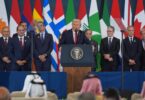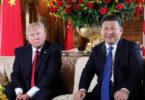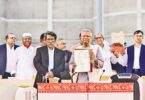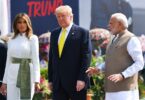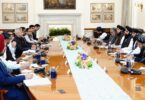The NY Times in its recent article The Nobel Prize and a Testy Phone Call: How the Trump-Modi Relationship Unravelled, claimed that the US President Donald Trump “no longer has plans to visit” India in the fall. India has been scheduled to host the 2025 Quad Leaders’ Summit in New Delhi in November. The Quad, or the Quadrilateral Security Dialogue, is a strategic alliance between India, the United States, Japan, and Australia.
While Trump’s visit may be reportedly off, the summit is still expected to commence with other leaders of the Quad. However, there is no official confirmation from Washington in regards to Mr Trump’s visit to New Delhi.
It was anticipated that both India and US would conclude the negotiations over the bilateral trade agreement during Trump’s visit to India. However, this may not be possible if indeed the US President declines his invite to India. In February 2025, India initiated the talks about the trade deal with the US but President Trump’s foolhardy attitude in imposing extra 25 per cent tariff on top of the reciprocal tariff of 25 per cent already imposed on India over India’s purchase of Russian oil has unraveled the deteriorating relations between two nations.
Another significant factor for contention has been Trump’s persistent claims of mediating a ceasefire between India and Pakistan post the Pahalgam terror attack (22 April 2025) in May 2025. While India has invariably denied any third-party mediation, Trump’s need for acknowledgement and demand to be endorsed for the Nobel Peace Prize by India has surely curdled the relationship between US and India.

Trump’s duplicity has been crystal clear, while he levied punitive tariff on India, the U.S. and Europe continue their own trade of certain goods with Russia. The Indian government has called the move unjustified.
India along with Brazil are faced with the highest US tariffs.
Even though the Indian Ministry of External Affairs (MEA) has clarified its stance on its oil imports, stating they are based on market factors and a vital necessity to India’s energy security, the U.S. and European nations have continued trade with Russia, including importing strategic materials like fertilizers, metals, and nuclear components. Additionally, it was reported, in the early phase of Western sanctions, the US had advised India to purchase Russian oil to stabilize global markets, however its decision to penalize India for the same, comes across as “unqualified hypocrisy”.
Another factor according to the analysts for the tariffs is Trump’s “America First” or the American exceptionalism campaign, which focusses on reducing the U.S. trade deficit. According to reports in 2024, the U.S. goods trade deficit with India was approximately $45.8 billion.
Another reason for the Tariffs could also stem from US’s strategy to gain upper hand for trade concessions, especially after India refused to open its agricultural markets to US goods.
According to Reuters and Wall Street Journal, despite US displaying a strong aversion to India’s trade deal with Russia, the U.S. officials have been clandestinely attempting to negotiate with Moscow on behalf of American oil giant ExxonMobil, in hopes of accessing the Russian energy sector.
The US contradiction could also be due the Sakhalin-1 oil and gas project in Russia. The Indian ONGC Videsh Ltd. holds a 20% stake in it and has continued operations despite Exxon’s withdrawal in 2022 during Ukraine war.
It is evident that Trump’s tariffs game stems from various factors, such as Washington’s desire to isolate India from the Russian energy market by making the Russian crude imports financially unfeasible. Secondly to reduce China and India’s growing energy footprint in Russia by substituting it with US. Thirdly Trump wants to secure the interest of the US oil lobbies, he aims to target Russia which is rich in hydrocarbons.
Another prime factor worth mentioning is the Arctic LNG and the Northern Sea Route.
Washington has displayed a keen interest in project which is led by Novatek. Both China and Japan hold stakes in this project. It is evident that US plans to freeze Russian projects until US can re-enter under a sanctions-free environment.
At the moment, India is being encouraged by Russia to join the Northern Sea Route initiative. This would give India a strategic access to Arctic energy flows by making it a “co-producer rather than a passive importer”.
If India had complied with Trump’s bratty demands not only would it have affected India’s relationship with Russia, but would have given Moscow the incentive to look towards US.
The US duplicity has only pushed India closer to Beijing and Moscow. On 31 August 2025, Prime Minister Narendra Modi held bilateral talks with Chinese President Xi Jinping on the sidelines of the Shanghai Cooperation Organization (SCO) Summit in Tianjin. Both India and China have reaffirmed their commitment to bolstering India-China relations on the basis of mutual respect, mutual interest, and mutual sensitivity. This is Prime Minister Modi’s first visit to China in seven years. Both nations have agreed on expanding bilateral trade and investment while addressing the trade imbalance between the two countries. China has also addressed India’s need for resources like rare earth minerals and fertilizers.
It is expected that this new development may see some shift in geopolitical dynamics as the thawing relations between India and China continue despite their differences.
Apart from change in the Sino India relations, earlier in July 2025 summit, the BRICS leaders raised concerns in unison against the increasing unilateral tariffs and non-tariff measures which they agree are inconsistent with WTO regulations due to Trump’s threats and imposition of tariffs on BRICS nations. He has warned these nations of imposition of additional tariffs for any de-dollarization efforts. Specific actions, like the increase of tariffs on Indian goods to 50% in August 2025, have only played against the US as BRICS has resolved to further strengthen their cooperation against the Trump ramblings.
BRICS nations are determined to create an independent financial infrastructure and diversify trade relationships.
A blockchain-based payment platform called BRICS Pay is expected to develop which will reduce dependency on the SWIFT system and the U.S. dollar for trade settlements. In the meantime, Russia and China are calling for de-dollarization, and trade between Brazil and China is being conducted in local currencies.
Brazil and India, are advocating for reforms within the WTO while a Chinese envoy publicly supported India against U.S. tariffs, describing the U.S. as a “bully”. It is a wonder if Trump’s strategic duplicity will garner any brownie points for the US or rather save the face of the individual sitting in Washington’s Oval office.





